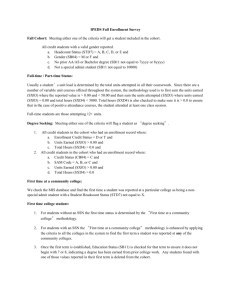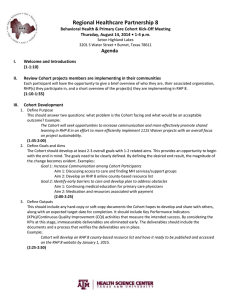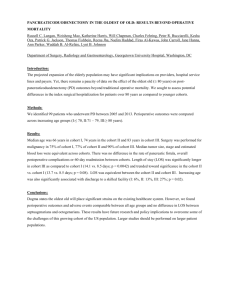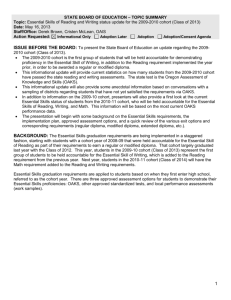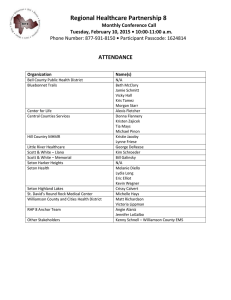Minutes
advertisement
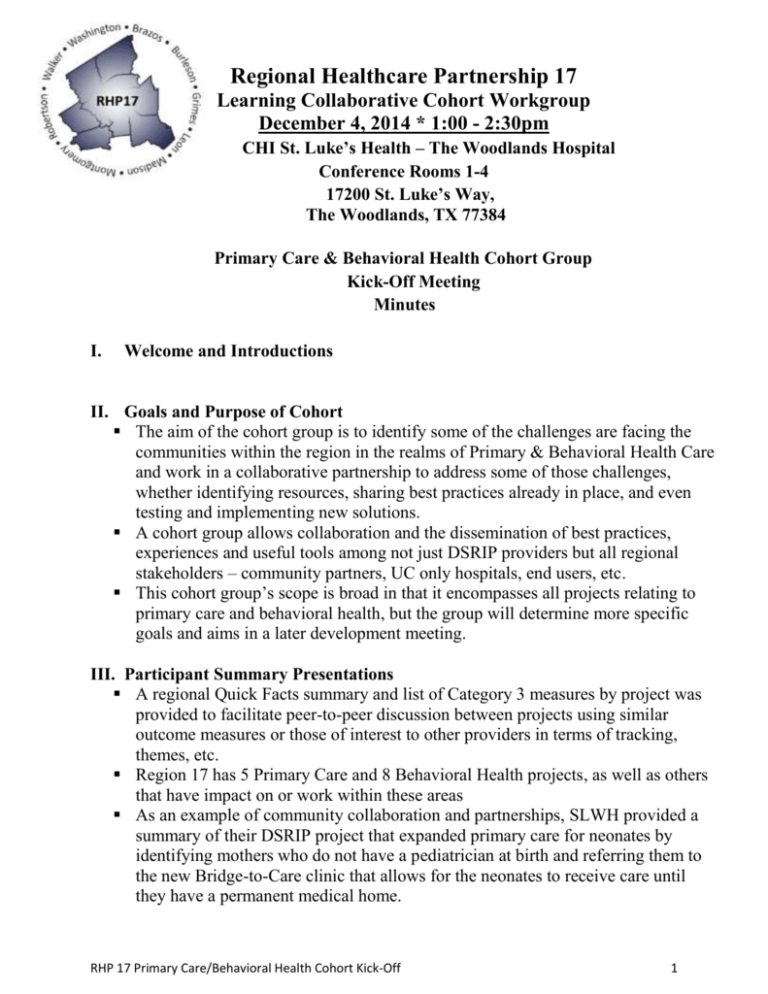
Regional Healthcare Partnership 17 Learning Collaborative Cohort Workgroup December 4, 2014 * 1:00 - 2:30pm CHI St. Luke’s Health – The Woodlands Hospital Conference Rooms 1-4 17200 St. Luke’s Way, The Woodlands, TX 77384 Primary Care & Behavioral Health Cohort Group Kick-Off Meeting Minutes I. Welcome and Introductions II. Goals and Purpose of Cohort The aim of the cohort group is to identify some of the challenges are facing the communities within the region in the realms of Primary & Behavioral Health Care and work in a collaborative partnership to address some of those challenges, whether identifying resources, sharing best practices already in place, and even testing and implementing new solutions. A cohort group allows collaboration and the dissemination of best practices, experiences and useful tools among not just DSRIP providers but all regional stakeholders – community partners, UC only hospitals, end users, etc. This cohort group’s scope is broad in that it encompasses all projects relating to primary care and behavioral health, but the group will determine more specific goals and aims in a later development meeting. III. Participant Summary Presentations A regional Quick Facts summary and list of Category 3 measures by project was provided to facilitate peer-to-peer discussion between projects using similar outcome measures or those of interest to other providers in terms of tracking, themes, etc. Region 17 has 5 Primary Care and 8 Behavioral Health projects, as well as others that have impact on or work within these areas As an example of community collaboration and partnerships, SLWH provided a summary of their DSRIP project that expanded primary care for neonates by identifying mothers who do not have a pediatrician at birth and referring them to the new Bridge-to-Care clinic that allows for the neonates to receive care until they have a permanent medical home. RHP 17 Primary Care/Behavioral Health Cohort Kick-Off 1 1. This project utilized a case manager to establish and maintain partnerships with community pediatricians, Texas Children’s Hospital, local FQHCs, and local clinics. As another example of potential challenges, Tri-County shared a summary of their behavioral health project that provided services to patients with co-morbid psychiatric disorders. Tri-County faced the challenge of community buy-in and awareness of the project. 1. This project was able to establish the community relationships with local Emergency Departments, police officers, jails and emergency medical services to get referrals using a social worker. 2. This program also faced the challenge of data exchange between multiple providers who use different EHR systems. TAMP EBP provided a summary of the Evidence-based Programs they are implementing to address chronic diseases and prevent falls. TAMP expressed interest in wanting to increase physician referrals to the program but the challenge of not knowing the best point of contact within a hospital to gain support. SLWH shared that they had several staff members receive training in TAMP’s Evidence-based programs for chronic disease, but faced the challenge that the staff who were trained had competing responsibilities elsewhere and as a result, the chronic disease programs were not as robust or easy to implement as anticipated. Looking to add a staff member with that in their job responsibilities. Multiple providers shared that they faced a problem gaining access to Emergency Department data to prove diversion. 1. SLWH shared that hospitals are limited in what types of data they can exchange with outside, community providers in the absence of a legal agreement between the two entities. Though they didn’t feel this was insurmountable and are currently working to try to share information with some potential partners like MCHD. 2. HCA (Conroe/Kingwood) shared that another challenge some hospital systems face is system conversions and/or incompatibility within the system so they must first address sharing data internally within the system before they can then further explore possibilities of sharing outside the system. These are things that have been challenges for HIE and data exchange for awhile. Additionally, as mentioned in previous cohort meeting, there are several PHI and HIPAA considerations that must be considered that make it hard for hospitals to share data with other organizations. 3. TCS mentioned the variation too in regulations governing behavioral health vs primary care in terms of PHI, etc., which also pose a challenge to integration projects and other sharing. IV. Group Activity/Discussion Discussion was robust and intermixed throughout the participant summary/group activity time designated for the meeting. Throughout the engagement and discussion, participants referenced the Aims worksheet, the other reference RHP 17 Primary Care/Behavioral Health Cohort Kick-Off 2 information, and the themes from received Tabletop Discussion documents following planning call. Cohort group members were reminded to complete and return the Tabletop discussion document, if they haven’t already. The Anchor team shared challenges identified in the Tabletop Discussion documents received, to highlight several themes for the group to consider, including: 1. Lack of community and internal buy-in for DSRIP projects 2. Communicating benefits of programs 3. Staffing issues \ 4. Data sharing SMART Aims worksheet and engagement checklists were shared to facilitate participant’s consideration of group goals and aims for the development meeting. Sample charters from other regions were also provided as examples of possible group output and considerations as development moves forward. Can start with a couple of goals and more simple aims to facilitate communication and build the collaboration, or look into common interests and themes like ED diversion and appropriate use, etc. V. Next Steps Commit to active participation 1. Plan to Attend development meeting at the end of January or the beginning of February 2015 2. Identify and meeting with internal staff members as an internal quality team 3. Delegate participation to hands-on project and other program people within your organization if you cannot make it, or if you think they’d be interested in participating and making connections. Identify community partners who would be a valuable cohort group member and send contact info to Anchor team. Send a couple dates and times at the end of January or beginning of February to the Anchor team to plan the next development meeting Activities to complete prior to the next development meeting: 1. Using the SMART Aims sheet provided, participants are to identify possible goals and aims for the group to focus on 2. Complete the provided Activity Checklist 3. Identify success stories, best practices and favorite tools to share with group and bring to the development meeting RHP 17 Primary Care/Behavioral Health Cohort Kick-Off 3

